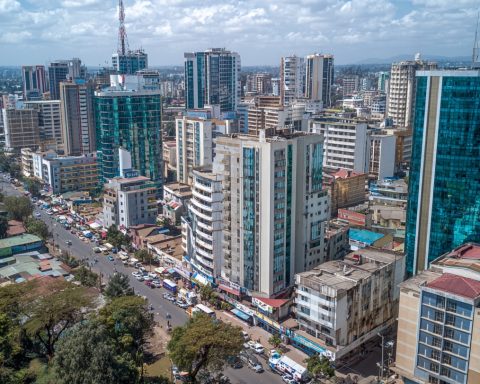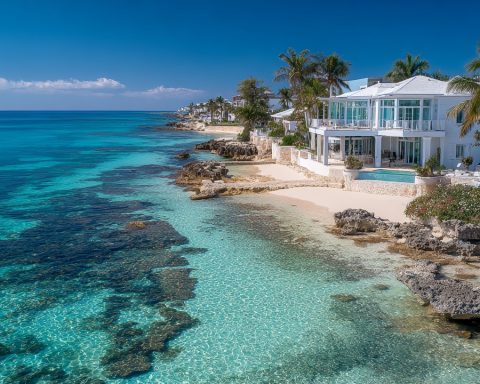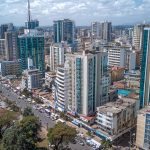Perth’s real estate market is on fire in 2025, defying national trends with record-breaking growth in home prices and a frenzy of buyer demand. Both residential and commercial sectors are experiencing dynamic changes. Below we dive into current market performance, recent trends in prices and rents, forecasts through 2030, the impact of policies and infrastructure, hotspot suburbs, and what it all means for investors.
Residential Real Estate Market Overview (2025)
Perth’s housing market is leading Australia in growth as of 2025. In 2024, Perth house prices surged by over 24%, taking the median house price from about $600,000 in late 2023 to $745,000 by December 2024 smartpropertyinvestment.com.au. This brought values well above the previous market peak (the last peak was $545,000 in 2014, now exceeded by 36.7% smartpropertyinvestment.com.au). Perth’s median house price has continued climbing into 2025, reaching approximately $780,000 as of May 2025, which is 18% higher than a year prior reiwa.com.au. Unit/apartment values have also risen sharply – the median unit price hit $535,000 (up 21% year-on-year) by May 2025 reiwa.com.au. This price growth has been the fastest of all Australian capitals, fueled by a combination of strong demand and limited supply.
Recent Trends and Price Movements
Several trends shaped Perth’s price boom in 2024-2025:
- Rapid Post-Pandemic Recovery: After a long period of stagnation in the 2010s, Perth home values took off from late 2020 onwards, accelerating through 2021 and again in 2023-24 openagent.com.au. The COVID-era surge nationally finally reached Perth in force, making 2024 one of the biggest growth years in the city’s history openagent.com.au.
- Broad-Based Growth: Price gains have been widespread across the metro. Affordable outer suburbs have led the charge – for example, suburbs in the City of Kwinana (like Medina, Parmelia, Orelia) saw annual house price jumps around 30–40% in 2024 apimagazine.com.au apimagazine.com.au. In fact, all of Australia’s top 10 fastest-rising suburban markets in early 2024 were in Perth, predominantly lower-priced areas apimagazine.com.au apimagazine.com.au. This reflects intense demand from first-home buyers and investors chasing affordable options. Even some premium neighborhoods saw remarkable growth (e.g. Shelley’s median house price jumped 38% to $1.27M in a year apimagazine.com.au).
- Record New “Million-Dollar” Suburbs: Dozens of suburbs entered the “million-dollar club” as their median house values pushed above $1 million for the first time during 2024 smartpropertyinvestment.com.au. Strong gains in middle-ring and coastal suburbs (e.g. West Perth up 48.9% to $1.34M smartpropertyinvestment.com.au, Kallaroo up 37% to $1.22M apimagazine.com.au) contributed to this trend. More are expected to join in 2025 realestatebusiness.com.au.
- Units Rebounding: Perth’s unit (apartment) market, which had lagged for years, is now rising quickly. Several suburbs saw unit prices climb over 30–40% in the past year – for example, Cottesloe units +50.9% (median $1.2M) and Bayswater units +44% apimagazine.com.au apimagazine.com.au. This shows buyers turning to units as an affordable entry point as house prices become less attainable smartpropertyinvestment.com.au.
To illustrate the breadth of growth, here are the top-performing suburbs by annual price increase recently:
Top 5 Perth Suburbs for House Price Growth (2024) apimagazine.com.au
| Suburb | Median House Price | Annual Growth (approx.) |
|---|---|---|
| Viveash | $620,000 | +40.9% |
| Hillman | $537,000 | +39.5% |
| Armadale | $460,000 | +39.4% |
| Midvale | $515,000 | +38.3% |
| Shelley | $1,269,999 | +38.0% |
Top 5 Perth Suburbs for Unit Price Growth (2024) apimagazine.com.au
| Suburb | Median Unit Price | Annual Growth (approx.) |
|---|---|---|
| Cottesloe | $1,200,000 | +50.9% |
| Bayswater | $350,000 | +44.0% |
| Girrawheen | $410,000 | +34.4% |
| Rockingham | $408,500 | +30.7% |
| Shoalwater | $312,500 | +30.2% |
Why such explosive growth? Perth’s affordability advantage has drawn many buyers into the market. Even after recent gains, Perth remains one of Australia’s most affordable capitals – a major house in Perth (~$780k median) still costs a fraction of Sydney’s (well over $1.3M) or Melbourne’s forbes.com propertyupdate.com.au. This relative value, combined with WA’s strong economy and population influx, has created a perfect storm for price growth reiwa.com.au openagent.com.au. Buyers from interstate and overseas see Perth as a bargain, and locals have been eager to upgrade or buy their first home before prices rise further.
Supply and Market Conditions
Despite climbing prices, market conditions favor sellers due to tight supply:
- Listings remain low: The number of properties listed for sale in Perth is still well below long-term averages. By May 2025 active for-sale listings were ~4,350, which is higher than the extreme lows of 2023 but still about 33% lower than a year ago reiwa.com.au. New listings have increased in 2025 (as some owners try to capitalize on high prices), yet buyer demand has kept inventory tight.
- Fast sales: Houses are selling at record speeds – median days on market is only ~13 days for houses (and 14 for units) as of May 2025 reiwa.com.au reiwa.com.au. In many affordable suburbs, homes sell in under a week. This rapid turnover underscores how competitive the market is, with buyers snapping up properties quickly.
- Construction lag: New housing construction in WA has not kept pace with demand. Building approvals have been in decline since 2022, and WA is building roughly half the number of dwellings it did at the peak in 2015 openagent.com.au. Labor and material shortages have further slowed homebuilding. With the state’s population expected to grow by ~90,000 in the next year, the supply-demand imbalance is likely to persist openagent.com.au. Developers and homebuilders simply can’t add stock fast enough, which props up prices of existing homes.
In summary, Perth’s residential market in 2025 is characterized by booming prices, low supply, and quick turnover. However, there are signs that the frantic pace of 2024 is easing slightly as more sellers come forward and as buyers adjust to higher price levels (annual growth has come off its peak, as seen in the chart above).
Rental Market Performance: Yields and Vacancy
The rental market in Perth has been extremely tight, though it’s finally showing tentative signs of relief. For much of 2022–2024, Perth’s rental vacancy rate hovered around record lows – plunging below 1% in 2022 and hitting an astonishing 0.4% in early 2024 smartpropertyinvestment.com.au. This ultra-low vacancy led to surging rents and intense competition for tenants (rental listings would get dozens of applicants).
As of 2025, vacancies have inched up from rock-bottom levels but remain low historically:
- Vacancy Rate: Perth’s vacancy rate has risen to ~2.5% by March 2025, up from 1.9% in Dec 2024 reiwa.com.au and the all-time low of 0.4% a year prior. It reached 2.0% in Jan 2025 (the first time since mid-2020) and continued to ~2.5% by March reiwa.com.au reiwa.com.au. This increase toward a more “balanced” rental market is largely due to a slight easing of demand and a modest increase in supply: some new investor-owned rentals have completed construction, and some renters have exited (moving in with family, or into homes they bought, etc.) reiwa.com.au. Note: A 2.5% vacancy is around the threshold of a balanced market (REIWA defines 2.5–3.5% as balanced) reiwa.com.au – so conditions are improving, though certain inner-city areas still have far lower vacancy than outer suburbs with new builds reiwa.com.au.
- Rents and Yields: Rents have skyrocketed over the past two years but are finally stabilizing. The median dwelling rent in Perth is about $675 per week as of mid-2025 reiwa.com.au. For houses, the median rent is $680/week (≈4.6% higher than a year ago) and for units $650/week (≈8.3% higher year-on-year) reiwa.com.au. Essentially, rents are roughly 8–15% higher than a year ago, but most of that increase happened in early 2024; by late 2024 and into 2025 rent growth has slowed to a crawl reiwa.com.au. In fact, the median unit rent has stayed flat at $650 since Dec 2024 reiwa.com.au, and house rents have held around $680 for several months, indicating a period of stability after the huge jumps.
- Rental Yields: Thanks to high rents relative to purchase prices, Perth offers some of the strongest rental yields of any capital city. Gross rental yields currently average about 4–5% for houses and 6%+ for units, depending on location reiwa.com.au reiwa.com.au. For example, a typical house at $780k with $680/week rent yields ~4.5%, and a unit at $535k with $650/week rent yields ~6.3%. These yields are very attractive compared to Sydney or Melbourne (where yields can be 2–3%). Data from early 2025 showed Perth’s average rental yield around 4.3% (all dwellings) – among the highest in Australia openagent.com.au. High yields and low vacancy have drawn investors’ attention to Perth, as they can get both capital growth and solid cash-flow.
- Rental Affordability Challenges: The rapid rent hikes have caused housing stress for many renters. By 2025, over half of WA households reported their housing (rent or mortgage) is unaffordable for them abc.net.au. Soaring rents forced some people to move further out to the urban fringes to find affordable options abc.net.au, or to double-up with roommates/family. The WA government has responded with measures like a rent relief program for vulnerable tenants (recently extended in 2025) reiwa.com.au, but fundamentally the solution is increasing rental supply.
Looking ahead, the outlook for the rental market is cautiously optimistic for tenants. With vacancy rates now rising into the 2% range, rent growth is expected to moderate significantly. REIWA notes that rent increases should slow in 2025 compared to the huge jumps of 2022–24, and we may even see periods of stability or only minor rises in rents smartpropertyinvestment.com.au. More investor-owned homes under construction will be completed and hit the rental market in 2025, gradually adding supply smartpropertyinvestment.com.au. That said, experts don’t foresee a glut of rentals – investor activity has actually declined lately (especially from Eastern States investors) smartpropertyinvestment.com.au, so the rental shortage will take time to fully resolve. By mid-2025, Perth’s rental stock was still so tight that new listings get leased within a median of 17 days reiwa.com.au, often with tenants lining up at the first inspection.
Key rental trend: demand is highest for rentals near the CBD, job hubs, and transport corridors, while outer suburban areas (where significant new housing has been built) are experiencing slightly less frenzy and longer time to lease smartpropertyinvestment.com.au. This reflects tenants’ willingness to pay a premium for location, and also that new construction has been concentrated in outer areas, easing pressure there first.
In summary, Perth’s rental market remains challenging for renters but is slowly improving. Vacancy rates are off record lows and rent growth is cooling. From an investor’s perspective, rental yields are very attractive and slightly higher vacancy is actually a healthy sign of a more sustainable market (ultra-low vacancy and double-digit rent hikes were unsustainable long-term).
Economic and Policy Influences on Housing
Multiple macro factors and government policies are influencing Perth’s property boom:
Economic Tailwinds
- Population Growth: Western Australia is experiencing a population boom, which directly fuels housing demand. WA’s population grew about 2.8% in the year to June 2024 – the fastest rate in the nation smartpropertyinvestment.com.au soho.com.au. This is driven by interstate migration (people moving from the Eastern states, attracted by affordable housing and job opportunities) and a resurgence of overseas migration post-COVID. More people means more demand for both owned homes and rentals, a key underpinning of the market. Although population growth may ease slightly going forward, WA is still projected to grow strongly for years, supporting housing needs reiwa.com.au.
- Robust Economy and Jobs: Perth’s economy is highly resilient at the moment. Unemployment in WA is very low (~3–4%), and the resources sector – traditionally the engine of the state – has been on a solid footing with 8 consecutive years of employment growth in mining as of 2024 reiwa.com.au. Importantly, WA’s economy has diversified compared to a decade ago; beyond mining, there’s expansion in healthcare, education, technology, and construction reiwa.com.au. This diversification means the housing market is less solely tied to commodity booms. Strong job growth and incomes, plus confidence in the local economy, have emboldened buyers. Households have also coped relatively well with interest rate rises so far, thanks to the strong labor market assets.kpmg.com assets.kpmg.com.
- Interest Rates Peaking: The Reserve Bank of Australia’s rapid rate hikes in 2022–2023 (raising the cash rate from 0.1% to around 4.1% by mid-2023) cooled most Australian housing markets – but Perth powered through that headwind. Many Perth borrowers navigated the higher rates without distress, aided by low unemployment and earlier prudence (prices hadn’t over-inflated pre-2020). By 2025, the interest rate cycle is at/near its peak, and there’s widespread expectation of rate cuts on the horizon smartpropertyinvestment.com.au. In fact, the RBA enacted a small rate reduction in early 2025, giving some relief. The prospect of falling mortgage rates later in 2025 is boosting buyer sentiment – lower rates improve affordability and borrowing power, which would likely re-energize housing demand smartpropertyinvestment.com.au. In short, the worst of the interest rate squeeze appears over, removing a major brake on the market.
- Resources and Infrastructure Boom: WA is benefitting from strong commodity prices (iron ore, lithium, etc.) which feed into government revenues and construction projects. The state government’s finances are healthy, allowing big infrastructure spending (detailed below) which in turn creates jobs and makes new areas attractive for housing.
Government Housing Policies and Taxation
Policymakers have introduced several measures to support housing and address affordability:
- Stamp Duty Concessions: The WA State Government (Cook government) in 2025 increased stamp duty relief for first-home buyers, effective from May 2025. Now, no stamp duty is payable for first-home purchases up to $500,000 (previously $450k), and discounted duty applies on homes up to $700,000 in Perth/Peel (up from $600k) reiwa.com.au. This means eligible first-time buyers can save up to ~$15,000 in taxes, easing the upfront cost of buying reiwa.com.au. These higher thresholds reflect Perth’s rising prices and aim to keep the door open for first-home owners. (The government also lifted the stamp duty free threshold for vacant land to $350k, encouraging land purchases for building reiwa.com.au.) REIWA has welcomed this move and even suggested indexing the thresholds to median house prices going forward reiwa.com.au.
- Shared Equity & Low-Deposit Schemes: In mid-2025, WA announced a $210 million Shared Equity Scheme to help lower-income buyers into homes abc.net.au. Through this program (expected to start in late 2025), the state will co-purchase up to 30-35% of a property (capped at $250k contribution), effectively reducing the amount the buyer needs to borrow abc.net.au. This helps make mortgages more serviceable for those who can’t afford full market price. Similarly, low-deposit loan options via Keystart (WA’s housing lender) continue to be offered. These initiatives increase home ownership opportunities, thereby adding demand at the lower end of the market.
- Build-to-Rent and Social Housing: The state government is also seeding build-to-rent (BTR) developments with a new fund, recognizing the need to increase rental supply abc.net.au. They’re facilitating the construction of affordable rentals and social housing – though these take time to materialize. A recent report found WA needs ~16,000 additional social housing units to meet community need curtin.edu.au, and the state has committed funding to add public housing stock. Additionally, incentives to attract construction workers (e.g. $12.3M to recruit interstate tradies) have been rolled out abc.net.au, aiming to speed up housing construction.
- Tax Settings: Western Australia has not implemented any new property taxes that negatively impact investors in this period (unlike some eastern states). Land tax and rental legislation remain relatively stable. One notable factor is WA’s foreign buyer surcharge (7% additional duty for foreign purchasers), which is still in place – however, this is a small segment of the market. Federally, tax settings like negative gearing remain unchanged (investors can deduct rental losses), which continues to favor investment in property.
In summary, government interventions in 2025 are mildly supportive – making it easier for first-home buyers to enter, trying to boost supply (in the medium term), and easing some cost-of-living pressures. While these policies by themselves aren’t enough to solve the housing shortage or halt price rises, they do have localized effects (e.g. first-home buyer activity is likely to jump in the sub-$600k segment due to stamp duty cuts reiwa.com.au).
Infrastructure Developments and Demographic Shifts Impacting Demand
Major infrastructure projects and demographic trends are reshaping Perth’s property landscape. These factors influence where demand is strongest and can create future hot spots.
Infrastructure Upgrades
- METRONET and Transport Links: Perth is in the midst of its largest public transport expansion in decades. The METRONET program (multi-billion dollar) is delivering new rail lines and stations that open up suburbs for development. By 2025, new train lines to Yanchep (far north) and Ellenbrook (north-east) are coming online, along with the Thornlie-Cockburn link in the south-eastern corridor. These projects dramatically improve connectivity for outer suburbs – turning once remote areas into viable commutable locales. For example, the Yanchep line extension (opened 2023) reduces travel time from Perth’s far northern suburbs, boosting demand in places like Alkimos and Eglinton. Rail and road upgrades often lead to rising property values in the serviced areas, as more buyers are willing to live there when transport is easier. We’re already seeing development interest and price growth in suburbs near new stations (e.g., Bayswater, which is a METRONET hub, saw unit prices jump 44% apimagazine.com.au).
- Road and Highway Projects: The 2025 state budget is funding major road upgrades, which will improve accessibility in key growth corridors. Notably, $485 million is allocated to widen the Kwinana Freeway and upgrade roads in Perth’s southern suburbs abc.net.au. This will ease congestion for booming communities in the south (Baldivis, Rockingham, Mandurah areas) and likely make those suburbs even more attractive for families commuting to the city. Other projects include new highways and local road improvements in developing outer areas. Better road infrastructure tends to unlock land for new housing estates and can raise values by cutting travel times.
- New Schools, Hospitals, Amenities: Infrastructure isn’t just transport – Perth’s government is also investing in community infrastructure. Over $660 million is slated for new schools and school expansions across WA (over four years) abc.net.au, many of which are in high-growth suburbs. New schools (and health facilities, recreational centers, etc.) are crucial for outer suburbs to become self-sustained communities. For instance, the announcement of new high schools or campuses in a region often correlates with a bump in family buyer interest. Similarly, upgrades to hospitals or the construction of new shopping centers can drive demand in certain precincts. These developments ensure that fast-growing corridors (e.g., Baldivis in the south, Ellenbrook in the north-east) have the services needed to support larger populations.
- Urban Redevelopment Projects: Within the inner city, projects like the Elizabeth Quay waterfront development, Perth City Link, and ongoing rejuvenation of areas like Scarborough Beach continue to add value. They create jobs during construction and make Perth a more vibrant city, attracting new residents. By 2030, the planned “Westport” project (a new port in Kwinana) is expected to be underway, which could stimulate both industrial and residential growth in Kwinana/Rockingham as the area transforms into a logistics hub.
- Regional Infrastructure: While this report focuses on Perth, it’s worth noting that infrastructure improvements in regional WA (e.g., upgrades to airports like Busselton, road improvements in the South-West) have boosted “lifestyle” towns. For example, the Busselton-Margaret River Airport expansion has made the south-west more accessible, contributing to price surges in regional centers like Bunbury (up 27% in 2024) smartpropertyinvestment.com.au as people move for lifestyle while retaining FIFO (fly-in-fly-out) resource jobs. This indirectly affects Perth by redistributing some demand, but also signals confidence in WA’s growth beyond the capital.
Demographic Shifts
- Interstate Migration: After years of losing population to other states (during the 2015–2020 downturn, many West Australians moved east), WA has reversed the trend. Now, people from NSW, Victoria, etc., are migrating to Perth, drawn by job opportunities and far cheaper housing. This net inflow, albeit moderate, adds pressure to housing. As affordability in Sydney/Melbourne worsens, Perth’s lifestyle and affordability combo is enticing, especially for young families and key workers who can sell a home on the East Coast and buy in Perth debt-free or with smaller mortgages.
- Overseas Migration and Students: With international borders open, WA is receiving its share of migrants and overseas students again. Historically many migrants gravitated to the eastern capitals, but WA’s strong economy is attracting skilled migrants (engineers, healthcare workers, etc.) and the state government is actively campaigning for more (including the tradespeople initiative) abc.net.au. Every 1,000 new migrants roughly requires 300–400 new dwellings, so the influx supports demand. Additionally, a growing international student population in Perth boosts the rental market (students often rent near universities and the CBD).
- Household Formation Changes: High rents and prices have led to some changes in household behavior that affect demand patterns. For example, more young adults are staying with parents longer or sharing accommodations (to save on rent) reiwa.com.au. This can temporarily suppress some housing demand. Conversely, as soon as rental conditions ease or incomes rise, these delayed households may rush to form (e.g., roommates splitting off into their own rentals or purchases), which can unleash pent-up demand. There’s also a trend of some renters turning into first-home buyers (out of frustration with the “rental roundabout” reiwa.com.au). This was noted by REIWA – some people decided to buy, even at high interest rates, because renting was too difficult. That dynamic actually adds to buyer demand in the entry-level segment.
- Lifestyle Preferences: The pandemic era saw a desire for larger homes, suburban lifestyle, and work-from-home space. Perth, being low-density, benefited as people sought houses over apartments and yards over units. Even though offices have reopened, many companies in Perth have adopted hybrid work, meaning people continue to value space at home. This sustained demand for houses (especially 3-4 bedroom homes) and for lifestyle suburbs – e.g., coastal living in areas like Scarborough or Mandurah, hills lifestyle in Kalamunda, etc. As long as Perth remains more affordable, some eastern states remote workers might even relocate to Perth for an improved lifestyle (bringing “digital” demand).
Overall, infrastructure and demographics are aligning to keep Perth’s housing market buoyant. New transport links and amenities are unlocking land and shifting demand to new growth corridors. A strong pipeline of government projects (transport, roads, schools, etc.) through 2030 will continue to enhance liveability and likely boost property values in targeted areas. Meanwhile, population growth – though it may moderate from the extreme 2.8% pace – is projected to remain healthy, given WA’s economic prospects. By 2030, Perth is expected to be a larger, better-connected city, with hotspots of growth following the train lines and freeway extensions outward.
Key Suburbs and Regional Hotspots: Growth and Decline
Within the Perth Metro area, performance varies by location and property type. Here’s a summary of which areas are thriving and which face headwinds:
- Affordable Outer Suburbs – Big Winners: As noted, many of the fastest-growing suburbs price-wise are the more affordable ones. Areas in the outer south (Kwinana/Rockingham corridor) like Medina, Parmelia, Orelia, Calista all saw ~30-40% price growth recently apimagazine.com.au apimagazine.com.au. Likewise, in the south-east corridor suburbs such as Armadale and Kelmscott (in the City of Armadale) jumped ~35-39% apimagazine.com.au. These locales offer house prices in the $400k–$500k range, which attracted first-home buyers using grants and investors chasing high yields (vacancy in many of these suburbs was under 0.5% openagent.com.au). The northern fringe has hotspots too – e.g., Viveash (near Midland) was the top performer at +40.9% apimagazine.com.au, and Alkimos/Eglinton in the far north are booming thanks to the new rail. Expectations: These areas may continue to see solid demand as they are still affordable, though once interest rates normalize, growth rates should moderate from the frenzied 2024 levels.
- Coastal and Lifestyle Suburbs: Perth’s love affair with the coast never fades. Established coastal suburbs (Scarborough, Mullaloo, Hillarys, etc.) and riverside locales (Como, Applecross, etc.) have all notched steady growth. For example, Scarborough’s median house price ~$1.3M, up ~7-9% in 2024 soho.com.au soho.com.au. High-end beachside areas like Cottesloe also soared (its unit market +50% as mentioned, houses similarly strong). These areas benefit from scarcity (limited new supply) and lifestyle appeal, and are in high demand from affluent buyers. They tend to be less volatile – not as explosive as the cheaper suburbs, but also they hold value better in downturns. No signs of decline here; if anything, demand for lifestyle properties has grown post-pandemic.
- Inner-City and High-Density Areas: Inner Perth (City of Perth, Northbridge, West Perth, East Perth) had been laggards for much of the boom, especially high-rise apartments, due to oversupply and COVID impacts. However, by 2024-2025 even these areas are picking up. West Perth’s median house price rose nearly 49% in 2024 smartpropertyinvestment.com.au (though that can be influenced by a small number of sales). Apartment prices in the CBD are also stabilizing. There is still a large amount of office space vacant in West/East Perth which dampens those areas slightly for residential demand reiwa.com.au (they lack some vibrancy), but as the population grows, urban living is slowly regaining popularity. In short, previously “cold” inner-city pockets are warming up – we’re not seeing actual price declines anywhere in 2025, just some areas with slower growth.
- Higher-End Market: The luxury segment (suburbs with medians well above $1M like Peppermint Grove, Dalkeith, City Beach) saw solid but not outsized growth. Wealthy areas did rise (e.g., Dalkeith +~10% in 2024), but the pace was more modest than the outer suburbs, partly because they didn’t fall as much previously and partly due to a smaller buyer pool. As interest rates rose, expensive homes became a bit less attainable, slowing that segment. That said, there’s very limited supply in these blue-chip suburbs, so prices have been resilient. No declines observed, just single-digit growth. Going forward, if interest rates remain high, high-end buyers may be more cautious, but any future rate cuts will quickly re-stoke this segment.
- Areas to Watch (Potential Weakness): There are a few areas to keep an eye on. New Housing Estates on the Far Fringe – places like Wellard, Piara Waters, Brabham – have seen lots of new land releases and house construction. If the market were to cool, these could face slower growth or plateauing because increased supply is coming. Also, they’re popular with first-home buyers who are sensitive to interest rates (so demand could dip if borrowing costs stay high). So far, they’ve been doing well (Brabham’s median up ~19.8% in 2024 openagent.com.au), but they don’t have the same scarcity factor as inner suburbs. Another potential soft spot is the apartment market in areas with many new builds (e.g., certain pockets of Perth CBD, Rivervale, Burswood). If investor demand cools, some of these units might struggle for price growth due to ample supply. Again, we haven’t seen actual price drops recently, just relative underperformance.
- Regional WA: Outside Perth, as noted, places like Bunbury, Geraldton, Albany are experiencing their own booms. Bunbury led with +27% house price growth in 2024 smartpropertyinvestment.com.au, and double-digit growth is forecast for 2025 in those regional cities smartpropertyinvestment.com.au. Drivers include people moving for lifestyle and local economic growth (e.g., Geraldton had strong investor activity and infrastructure improvements reiwa.com.au). Mining towns in WA (Port Hedland, Karratha) also had a rebound in rents and prices with the mining upswing, although those can be volatile. These regional trends indirectly affect Perth as well – for example, some FIFO workers choose to live in regional Southwest rather than Perth now (affecting Perth rental demand slightly), and some investors opt for Geraldton or Kalgoorlie properties for higher yields, etc. But overall, Perth remains the prime focus for most buyers and investors in WA.
Bottom line: Virtually all parts of Perth have been in growth mode through 2025 – a rising tide lifting all boats. No suburb is notably “in decline” right now in terms of prices. The differences are in degree of growth. Affordable outer suburbs and certain niche markets are skyrocketing, while premium and oversupplied areas are growing at a steadier, moderate pace. For the next few years, growth is expected to continue across most areas, but smart investors will look for suburbs with growth drivers (e.g. new infrastructure, retail developments, employment hubs) and avoid those that might face supply gluts.
Commercial Real Estate Market in Perth (2025)
Perth’s commercial property sector is also seeing notable trends in 2025, with some sectors outperforming others. We’ll break down the office, retail, and industrial markets, including prices, rents, and outlook:
Office Market
The Perth office market is in a gradual recovery phase. Perth’s CBD office sector suffered a high vacancy rate after the mining-investment downturn (vacancies spiked well above 20% in mid-2010s). The situation is improving but still challenging:
- Vacancy and Demand: As of Q4 2024, the office vacancy rate in Perth CBD was around 15% tenantcs.com – an improvement from prior years (down from ~19% a couple of years ago). Prime-grade offices (modern buildings) have lower vacancy (~12%) while older secondary offices are about 20% vacant cbre.com.au. This reflects tenants “flight to quality” – companies will lease in the best buildings, leaving older stock empty. Suburban office nodes like West Perth also have plenty of space available. Tenants today often negotiate hard for incentives (rent-free periods, fit-out contributions) given the still-elevated vacancy reiwa.com.au. The work-from-home trend has limited new demand, but positive signs include net absorption turning positive (businesses taking up more space) over 2024 oxfordeconomics.com.
- Office Prices and Sales: Despite leasing headwinds, office sale prices have actually inched up. Owner-occupiers (local businesses) are buying small office suites to use themselves, taking advantage of low interest through 2022 and now the comparative affordability of Perth offices. In the year to March 2025, median office sale prices per sqm rose about 10.2% reiwa.com.au. Much of the activity is in the $250k–$500k price bracket – e.g., medical professionals, accountants buying 40–80 sqm offices for their practices reiwa.com.au. There were ~453 office property sales in Greater Perth in the 12 months to Mar 2025, up 12% from the previous year reiwa.com.au, indicating rising transactional activity. Office yields (rental return on price) in Perth are higher than east coast cities, which is starting to attract some interstate investors back reiwa.com.au. Investors see value in Perth where prices are low; however, they remain cautious due to the leasing challenges.
- Outlook: The Perth office market is expected to improve slowly. No major new office towers are completing soon (which helps – oversupply isn’t increasing). As the economy grows, vacant space will be absorbed. By 2030, with continued diversification of the economy, demand for office space should rise. Still, a return to sub-10% vacancy may take a few years. In the interim, it’s a tenant’s market for leasing (tenants can get good deals), but a potentially opportunistic market for buyers who can purchase quality office assets at higher yields than elsewhere. For example, prime Perth office yields might be ~6-7% compared to Sydney at 4-5%. If you choose the right building/location (and can secure a tenant), the upside is significant once the vacancy rate normalizes.
Retail Market
Retail real estate in Perth has unexpectedly become the star performer in the commercial sector. After a tough period (with COVID disruptions and the shift to online shopping), retail property has rebounded strongly:
- Price Growth: In the year to March 2025, Perth’s retail property sector saw a 23.8% jump in median sale price per square meter reiwa.com.au – the highest growth of any commercial segment. The median price hit about $5,238/sqm. This surge is attributed to renewed investor interest in retail assets, especially neighborhood shopping strips and suburban retail centers.
- Drivers: Several factors are driving retail’s revival. Investors who were priced out of industrial properties (where yields fell as prices rose) started turning to retail for better returns reiwa.com.au. Eastern states investors also entered, finding Perth’s retail yields attractive compared to Sydney/Melb retail reiwa.com.au. Additionally, population growth boosts retail – more people means more customers for shops, and even spurs new businesses requiring space reiwa.com.au. Perth’s strong population gains have translated into very low vacancy for well-located retail (high streets in growth suburbs, etc.). The result is competition for good retail sites, lifting prices.
- Activity: There were around 212 retail property sales in Greater Perth in the 12 months to Mar 2025, up 34% year-on-year reiwa.com.au. So volume is up along with values. The inner-city region recorded the highest median retail prices (~$7,500/sqm) given prime locations reiwa.com.au, but suburban areas (South West, etc.) also saw lots of deals. Many sales (nearly 29%) were in the $250k–$500k range reiwa.com.au – these are small strata shops, cafes, etc., which mom-and-pop investors or small businesses buy.
- Outlook: Retail property sentiment in WA has improved and should remain positive in the short term. As long as consumer spending holds up and population grows, retailers will do well, supporting rents. Retail rents had been flat in the CBD (due to some vacancies), but suburban retail rents are rising now that spaces are filling. Retail yields in Perth might range ~5-7% depending on the asset. Risks include e-commerce continuing to cap retail expansion, and interest rates (higher financing costs can hit retail owners). But with no major oversupply of retail space and new residential developments in suburbs creating need for more shops, the retail sector is positioned for steady performance. Key opportunity areas: suburban lifestyle precincts, large format retail (bulky goods) in growth corridors, and any retail linked to essential services (groceries, etc.) which proved very resilient.
Industrial Market
Industrial real estate (warehouses, logistics, factories) has been a hot sector Australia-wide, and Perth is no exception:
- High Demand, Low Supply: Industrial property has had a boom due to growth in logistics (think warehouse demand from online shopping, mining service industries, etc.). In Perth, the industrial vacancy rate is extremely low – many businesses are looking to secure warehouses and distribution centers, but there’s limited modern stock. This supply-demand squeeze pushed industrial land and warehouse prices up ~14.5% in the year to March 2025 reiwa.com.au. The median price was about $2,675/sqm land for industrial, with inner areas fetching >$3,300/sqm reiwa.com.au.
- Sales and Investor Interest: The number of industrial property sales actually fell ~7.6% in the past year reiwa.com.au, but importantly this was due to lack of properties to buy, not lack of buyers. REIWA notes a shortage of supply – many industrial owners are holding onto assets, and there’s not enough new industrial subdivisions ready reiwa.com.au. Despite fewer sales, agents report intense competition for any good warehouse that comes up – some buyers are paying above asking price to secure quality properties reiwa.com.au. Businesses (owner-occupiers) are very active, as owning their premises fixes their costs. At the same time, investors are keen on leased industrial assets since those come with stable tenants (and Perth industrial leases often tied to mining and distribution, which are doing well).
- Rents and Yields: Industrial rents have climbed sharply (double-digit growth in rents in 2022-24), compressing yields as prices also rose. Perth’s industrial yields remain higher than east coast – roughly in the 5.5%–7% range depending on location/quality. But they have firmed from perhaps ~8% a few years ago to closer to ~6% for prime stock now, reflecting higher prices. Investors from interstate are still finding Perth industrial good value, despite yield compression, because Sydney/Melbourne industrial yields are as low as ~4%.
- Outlook: The industrial sector is expected to stay strong. WA’s economy (mining, freight, construction) relies on industrial space, and with projects like a new container port (Westport) planned, the demand for logistics property will grow. There are huge industrial estates planned south of Perth (Latitude 32, Nambeelup, etc.), but those will roll out gradually. Limited land near the metro and construction costs may keep supply lagging demand in the near term. So prices for industrial land and warehouses could continue rising, though perhaps at a moderating pace if interest rates keep rising the cost of capital. Industrial is typically the least sensitive to consumer sentiment and more tied to economic output, which for WA is forecast to remain robust.
In summary, commercial real estate in Perth in 2025 shows: a recovering office sector (with good buying opportunities but still tenant-favored leasing), a booming retail segment driven by investors and population growth, and a very tight industrial market with strong fundamentals. For investors, retail and industrial yields have compressed but still beat eastern states, making Perth attractive for diversifying a portfolio. One should be mindful of each sub-market’s quirks – e.g. office requires careful tenant risk assessment given high vacancies, industrial might face higher interest rates impact due to lower yields, etc. But overall, Perth’s commercial property outlook is much improved from a few years ago, aligning with the city’s general economic upswing.
Short-Term and Long-Term Price Forecasts
Where are Perth property values headed from here? Most analysts project continued growth, but at a more moderate and sustainable pace than the recent boom. Let’s break down forecasts for the short term (next 1–2 years) and then towards 2030:
2025–2026 Outlook (Short-Term)
- Moderating Growth: After 2024’s enormous gains, 2025 is expected to see slower (but still positive) price growth. The Real Estate Institute of WA (REIWA) forecasts Perth’s median house and unit prices will rise between 5% and 10% in 2025 smartpropertyinvestment.com.au. That implies the market remains strong, just not at the frenzied 20%+ annual rate. Already in early 2025, monthly data shows price growth in Perth is continuing but easing off – e.g. house prices rose ~0.6% in May reiwa.com.au. Factors contributing to a gentler climb include slightly improved housing supply (more listings and building completions) and the pinch of past interest rate hikes slowing what buyers can pay.
- Interest Rate Relief: A big upside risk for 2025 is interest rates. Should the RBA cut rates sooner or more than expected (for example, if inflation falls faster), borrowing costs could decline. REIWA notes that any rate cuts will boost buyer confidence and capacity, possibly pushing growth to the upper end of forecasts smartpropertyinvestment.com.au. Currently, the consensus is a modest decline in rates late 2024 into 2025 assets.kpmg.com assets.kpmg.com, which will provide a tailwind.
- Economic and Policy Wildcards: The first half of 2025 also coincides with state and federal elections in Australia. Historically, housing market activity can slow in the lead-up to elections due to uncertainty smartpropertyinvestment.com.au. Since housing affordability is a major political issue, buyers and sellers might wait to see if any new grants, taxes, or regulations are announced. For instance, a new government could propose changes to negative gearing or additional investor taxes (not expected, but possible) which would affect sentiment. Additionally, if WA’s resource sector hits any turbulence (for example, a drop in iron ore prices), that could momentarily dent confidence. However, as of now the economy is solid.
- Rents and Yields: In the short term, rents are likely to keep rising but at a slower rate. We may see mid-single-digit percentage rent growth in 2025 (versus double digits last year) smartpropertyinvestment.com.au. Vacancy rates are projected to rise slightly further towards ~3% by late 2025 reiwa.com.au, relieving some pressure on tenants. For property investors, this means yields will likely hold around current levels – the combination of some rent increases and some price increases keeps yields steady. If interest rates fall, the cost of holding property eases, which might bring in more investors later in 2025, again supporting prices.
- Forecast Numbers: To quote one forecast, KPMG Economics predicts Perth will be the fastest-growing housing market in 2024 and then slow to ~5.2% house price growth in 2025 assets.kpmg.com. Their modeling has Perth house values up ~10% in 2024 and another ~5% in 2025, with unit values up ~8% in 2024 and ~8% in 2025 assets.kpmg.com. This aligns with REIWA’s 5–10% range. In other words, 2024 was the peak growth year, and 2025 should see more normalized but still healthy appreciation. By end of 2025, Perth’s median house price could be around $780k * 1.05 = $820k (low end) to $780k * 1.10 = $858k (high end), if these forecasts hold.
- Risks: The main short-term downside risk would be a scenario where inflation persists and the RBA hikes rates further instead of cutting. Significantly higher interest rates could cool the market more abruptly, perhaps stalling price growth. Another risk is if construction unexpectedly ramps up (thereby flooding supply), but given labor constraints that’s unlikely in 2025 openagent.com.au. Upside risk, conversely, is if the return of migrants/interstate movers is stronger than anticipated, keeping demand red-hot.
2027–2030 Outlook (Long-Term)
Looking further out, forecasting becomes more speculative, but most property analysts see Perth’s long-term trajectory as positive – though not without cycles. Key points for 2025–2030:
- Continued Growth (at long-run average rates): Over the long term, property prices tend to roughly follow economic growth and inflation. Perth’s long-run average house price growth has been about 4-5% per year propertyupdate.com.au (though with big cycles in between). If we assume a modest 4.8% annual growth (Perth’s 30-year average propertyupdate.com.au), the median house price could rise from around $780k in 2025 to roughly $980,000 by 2030 propertyupdate.com.au. Unit prices, at a similar growth rate, might reach $650–690k by 2030 propertyupdate.com.au. This would be a cumulative ~25% increase over 5 years. Such a scenario factors in periods of slower and faster growth aligning with economic conditions, but essentially indicates new record highs by 2030.
- Bullish Scenario: Some forecasts are more bullish on Perth (given its recent momentum and relative value). For instance, one projection expects 6-8% annual house price growth through 2030, which would see the median house price potentially exceed $1.3–1.4 million by 2030 soho.com.au soho.com.au. This assumes Perth continues to outpace other cities thanks to strong population influx and chronic undersupply. While ambitious, it’s not impossible – it represents roughly doubling prices over the decade (note: Perth’s median was about $550k in 2020; doubling by 2030 implies ~7% compound growth).
- Bearish Consideration: No forecast is without risk. Perth’s market is still commodity-influenced – a severe downturn in the mining sector (for example, if global demand for iron ore plummeted) could cause a local recession and property slump, as seen post-2014. Should that happen in the late 2020s, we could see a year or two of price declines. Another factor is affordability – if prices grow too fast relative to incomes, eventually demand is choked off. Already by 2025, there are affordability concerns (first-home buyers needing government help, etc.). If wages don’t keep up, growth must slow. For long-run stability, Perth might average nearer the lower bound (3-5% annual) with occasional dips.
- Rental Market 2030: By 2030, Perth’s rental market might normalize with vacancy rates in the 3-5% range and rent growth aligning with inflation (assuming the current construction push alleviates the worst of the shortage). However, unless a huge volume of housing is built, rents are unlikely to drop significantly – the days of very cheap Perth rents are gone. Investors can probably count on Perth maintaining higher yields than other capitals in the long run due to the state’s growth and less investor saturation than say Melbourne or Sydney.
- Big Picture Drivers: Demographically, Perth is projected to add hundreds of thousands of residents by 2030. Urban planning forecasts new suburbs and satellite cities to accommodate this. Infrastructure projects (some mentioned above) will come to fruition by 2030, potentially boosting areas like the north-east (Ellenbrook rail) and south-west (Kwinana freeway extensions, new port). The diversification of WA’s economy (renewable energy projects, manufacturing, tech) could create new employment hubs, impacting housing demand distribution. And climate preferences may drive more people to WA’s warm climate if remote work grows – an X-factor that could benefit Perth.
Several sources and experts remain optimistic about Perth’s prospects. As one property commentator noted, “Perth is one of the best positioned markets over the next 5 years”, citing its affordable prices, high yields, and economic prospects soho.com.au openagent.com.au. Perth is sometimes called a “late bloomer” – it didn’t see as extreme a boom in 2020-21 as Sydney/Brisbane, so it had more upside room which it’s now capitalizing on propertyupdate.com.au. By 2030, Perth may well close some of the gap with Brisbane and Melbourne prices, especially if it maintains above-average growth.
Bottom line: Barring unforeseen shocks, Perth real estate in 2030 should be worth considerably more than today. Moderate, compounding growth is the base case, with the city’s median house perhaps around $1 million give or take (still likely cheaper than Sydney/Melbourne even then). The journey will likely include periods of rapid growth (like 2024), interspersed with plateaus or mild corrections as the market cycles, but the overall trend line is poised upward.
Insights for Investors: Opportunities and Risks
For property investors evaluating Perth, the market offers a mix of compelling opportunities and notable risks. Here are key insights:
- ✅ Higher Rental Yields: Perth provides much stronger rental yields than east coast cities. It’s common to find 5%+ gross yields in Perth, especially on apartments or lower-cost houses reiwa.com.au openagent.com.au. This means better cash-flow – properties are more likely to cover their own mortgage costs (or come close), which is attractive amid higher interest rates. Opportunity: Investors can earn solid income while awaiting capital growth, and positive cash-flow is easier to achieve in Perth.
- ✅ Affordable Entry Point: Perth is still Australia’s most affordable capital for houses openagent.com.au. With a median house price ~$780k (and many suburbs well under $600k), entry costs are lower, allowing diversification or entry with less capital. Opportunity: Compared to Sydney or Melbourne, an investor’s dollar goes further – one could buy two houses in Perth for the price of one in Sydney. This affordability also suggests more room for growth as other cities have already stretched affordability.
- ✅ Strong Economic Fundamentals: WA’s economy (mining, exports, etc.) is in a robust phase, and the state government has low debt and is investing heavily in infrastructure. Opportunity: A booming local economy generally translates to job creation, population growth, and housing demand – a positive backdrop for property values. Investors can target areas benefiting from big projects (e.g., suburbs near new train lines or industrial hubs).
- ✅ Undersupply = Capital Growth Potential: Years of under-building and an ongoing housing shortage mean supply is unlikely to catch up with demand in the near future openagent.com.au. This underpins future capital growth. Opportunity: Investing during a supply crunch can be lucrative – existing properties in land-constrained areas can appreciate significantly as competition for housing stays fierce.
- ⚠️ Economic Cyclicality (Mining Dependency): A significant risk is WA’s exposure to the commodities cycle. Perth’s economy (and housing market) has historically boomed during mining expansions and slumped when commodity prices fall. If, for example, iron ore demand from China wanes in a few years, WA could face job losses and slower migration, hitting housing demand. Risk: Investors must be aware that Perth’s market, while currently rising, has experienced decade-long stagnation in the past (e.g., 2015–2020) when the mining sector cooled. Diversifying across different cities or asset types can mitigate this.
- ⚠️ Interest Rate and Finance Risks: Investors rely on financing, and while Perth yields are high, interest rates are also high in 2025. If an investor’s cost of borrowing exceeds the yield, they’ll be negatively geared (out-of-pocket). Risk: If rates don’t fall as expected or if banks tighten lending criteria (e.g., higher buffers or lower investor LVRs), it could dampen investor activity and prices. Always stress-test your investment for interest rate rises, even if cuts are anticipated.
- ⚠️ Liquidity and Market Size: Perth is a smaller market than Sydney/Melb; certain property types can be less liquid. For example, high-end luxury homes or specialized commercial properties might take longer to sell in a weaker market. Risk: Ensure you have a buffer and a long-term mindset; don’t assume you can flip a property quickly at any time. In a downturn, Perth buyer demand can thin out more than in larger cities.
- ⚠️ Construction and Supply Risks: There is a big push to increase housing supply – government grants for development, freeing up land, etc. Over the next 5-10 years, it’s possible Perth will see new estates and apartment projects that add significant stock. Risk: If you buy in an area that later has thousands of new house-and-land packages or units come on the market, your property’s growth and rent might stall. Focus on locations with some natural scarcity or differentiation (established suburbs, unique features) to buffer against this. For instance, an inner suburb character home may hold value better than a cookie-cutter outer suburb house if a supply surge occurs.
- ✅ Diversification of Economy: One promising sign is WA’s effort to diversify (into renewables, battery manufacturing, tech, etc.) reiwa.com.au. If successful, this could smooth out the historical boom-bust and support more stable long-term property growth. Opportunity: Investors aligning with these growth sectors (e.g., buying rentals near new tech parks or near universities/hospitals benefiting from growth) may find steady tenant demand and price appreciation.
- ✅/⚠️ Government Policies: On the plus side, WA has pro-housing policies (stamp duty cuts for buyers, etc.) that stimulate demand reiwa.com.au. However, one must watch for any future policy changes that could impact investors – for example, if rental laws become more stringent (there’s national talk of stronger tenant rights/rent controls in extreme cases) or if a future government reintroduces mining taxes that hit the economy. Currently, though, the policy environment is relatively friendly: no land tax surcharges for locals, no proposals to remove negative gearing, etc. Keep an eye on federal elections (any changes to investor tax treatment) and state housing initiatives (they can influence first-home buyer activity, which cascades up the market).
In conclusion, Perth offers a compelling investment case in 2025 – high yields, affordable entry, and strong growth drivers. Many investors are already capitalizing: for example, all of Canstar’s top 10 suburbs for investors in 2024 had ultra-low vacancies (0.2–0.5%) and sub-$500k prices, indicating plenty of room for growth openagent.com.au. Smart investors should do thorough research: pick suburbs with upcoming infrastructure, diversified employment, and tight supply. It’s also wise to have a long-term horizon to ride out any cyclical dips. With those strategies, investing in Perth property from now to 2030 could be very rewarding.
Sources: The analysis above is based on data and reports from REIWA (Real Estate Institute of WA) smartpropertyinvestment.com.au reiwa.com.au, CoreLogic and KPMG forecasts assets.kpmg.com, news articles and government releases (ABC News, WA Government) abc.net.au reiwa.com.au, and property market experts apimagazine.com.au openagent.com.au, among others. All information is current as of 2025. This comprehensive review should equip readers with a clear understanding of Perth’s real estate market and its outlook toward 2030.












